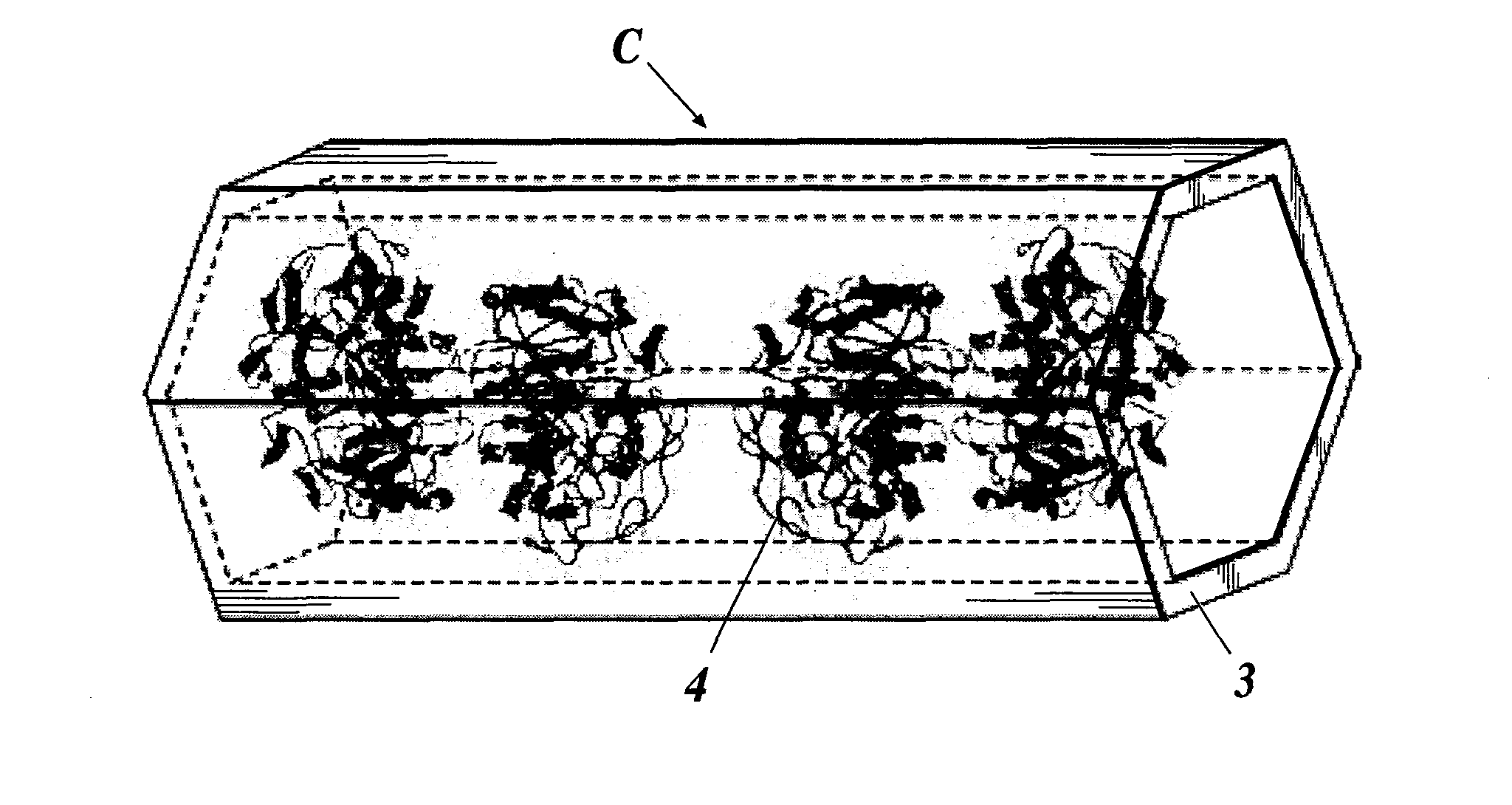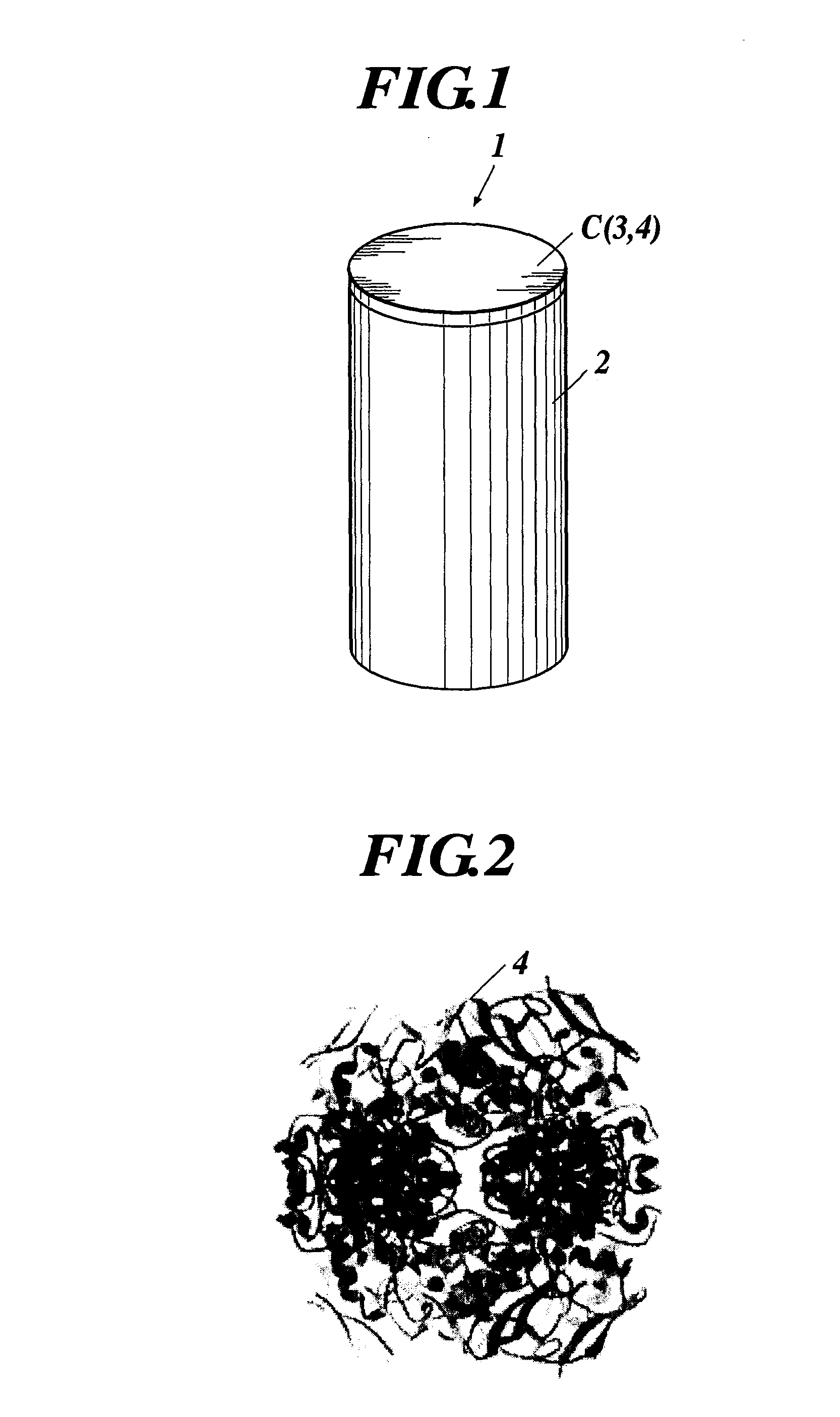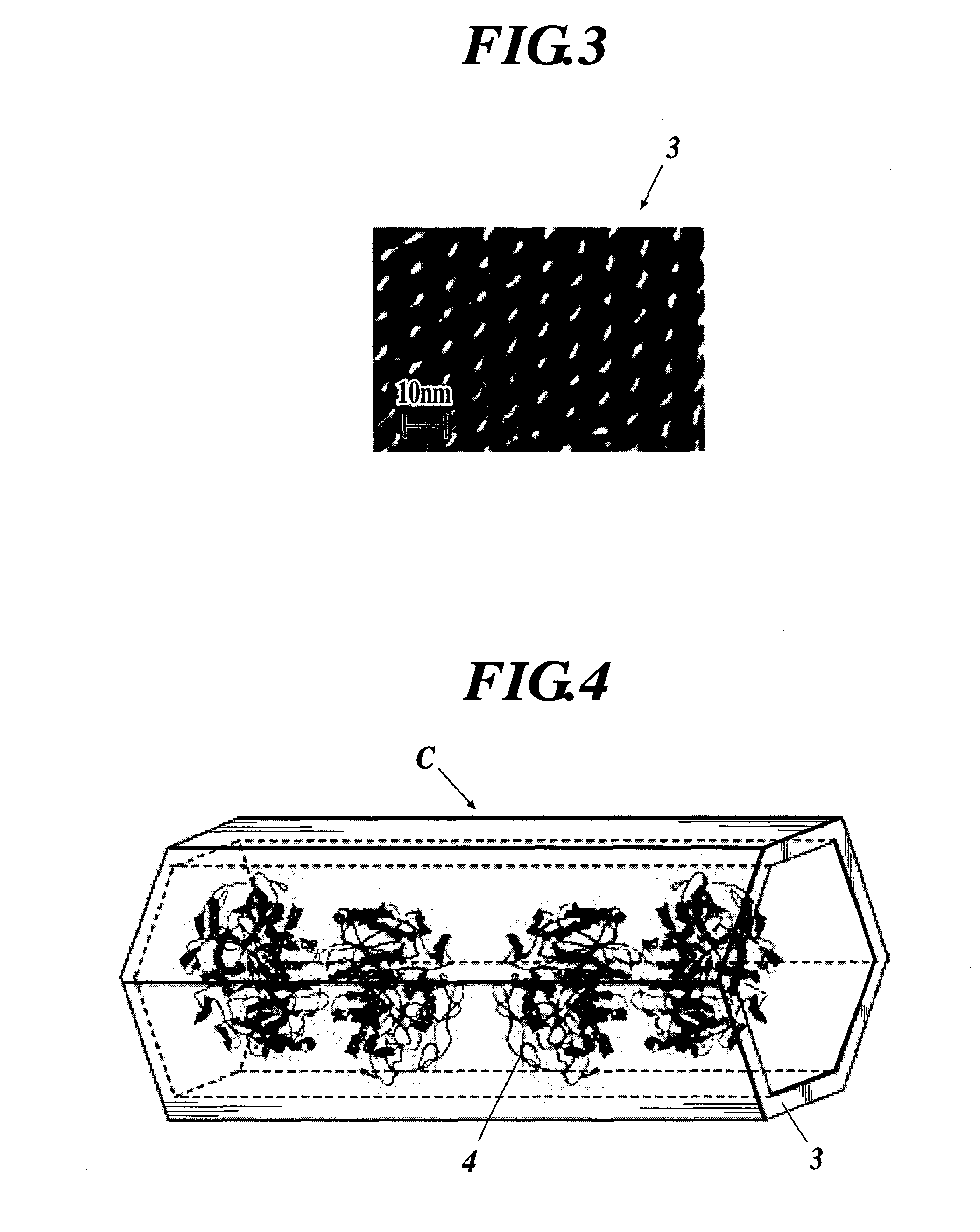Enzyme Electrode and Enzyme Sensor
a technology of enzyme electrodes and electrodes, applied in enzymology, biomass after-treatment, biological testing, etc., can solve the problems of low versatility, high cost, and inability to obtain sufficient stability of enzymes, and achieve excellent stability, long operating life, and large specific surface
- Summary
- Abstract
- Description
- Claims
- Application Information
AI Technical Summary
Benefits of technology
Problems solved by technology
Method used
Image
Examples
first example
(1) Synthesis of Mesoporous Silica Material 3
[0115]In a first example, first, a mesoporous silica material 3 was synthesized.
[0116]More specifically, 271.59 g of water glass No. 1 and 828.41 g of water were mixed, and heated at 80° C. thereafter. Separately, 80 g of docosyltrimethylammoniumchloride (DTMA-C1) was added to 1 L of water at 70° C. After the solution became completely transparent, 70 mL of triisopropyl benzene was added to the solution, and the solution was stirred hard by a homomixer for 30 minutes. This emulsified solution was immediately added to the water glass solution and stirred for another 5 minutes. 2-normal hydrochloric acid was added to this solution taking around one hour, and stirred at pH 8.5 for around three hours. After suction filtration of the solution was performed, dispersion into heated water at 70° C. and the filtration of the solution were repeated. A white powdery mesoporous silica material 3 was obtained by calcination of the solution for six hou...
second example
(1) Synthesis of Mesoporous Silica Material 3
[0157]In a second example, first, the membranous mesoporous silica material 3 filled with one-dimensional silica nanochannel assembly was synthesized.
[0158]More specifically, 1.0 g of PEG-P123 copolymer, 20 mL of ethanol, 2 mL of water, and 100 μL of concentrated hydrochloric acid were mixed, and thereafter refluxed for one hour at 60° C. being stirred. Furthermore, 2.1 g of tetraethylorthosilicate (TEOS) was added to the solution, and the solution was refluxed for two hours at 60° C. Then, 4 mL of this solution was extracted and dropped into a porous anodized aluminum film (diameter: 47 mm, thickness: 0.6 μM, and small cavity diameter: 0.1 μM). Then, drying was performed at normal temperature in a desiccator for 20 minutes after vacuum filtration. The membranous mesoporous silica material 3 was obtained by calcination in the electric furnace at 500° C. for five hours.
[0159]The membranous mesoporous silica material 3 was measured by a tra...
third example
(1) Synthesis of Mesoporous Silica Material 3
[0195]In a third example, first, the mesoporous silica materials 3 and the membranous mesoporous silica materials 3 filled with one-dimensional silica nanochannel assembly were synthesized.
[0196]More specifically, the white powdery mesoporous silica materials 3 having average small cavity diameters of about 2.7 nm, 4.2 nm, 6.2 nm and 8.2 nm were obtained by a similar method to that of the first example or the like. The obtained mesoporous silica materials 3 may be referred as FSMs hereinafter.
[0197]Also, the membranous mesoporous silica materials 3 having average small cavity diameters of about 8.2 nm, 12.2 nm, 17.8 nm, and 98.4 nm were obtained by a similar method to that of the second example or the like. The obtained membranous mesoporous silica materials 3 may be referred as mesoporous films hereinafter.
(2) Formation of Enzyme Protein Complex C
[0198]Next, the enzyme protein complexes C were formed by immobilizing the enzymes 4 in the ...
PUM
| Property | Measurement | Unit |
|---|---|---|
| diameters | aaaaa | aaaaa |
| depths | aaaaa | aaaaa |
| depths | aaaaa | aaaaa |
Abstract
Description
Claims
Application Information
 Login to View More
Login to View More - R&D
- Intellectual Property
- Life Sciences
- Materials
- Tech Scout
- Unparalleled Data Quality
- Higher Quality Content
- 60% Fewer Hallucinations
Browse by: Latest US Patents, China's latest patents, Technical Efficacy Thesaurus, Application Domain, Technology Topic, Popular Technical Reports.
© 2025 PatSnap. All rights reserved.Legal|Privacy policy|Modern Slavery Act Transparency Statement|Sitemap|About US| Contact US: help@patsnap.com



